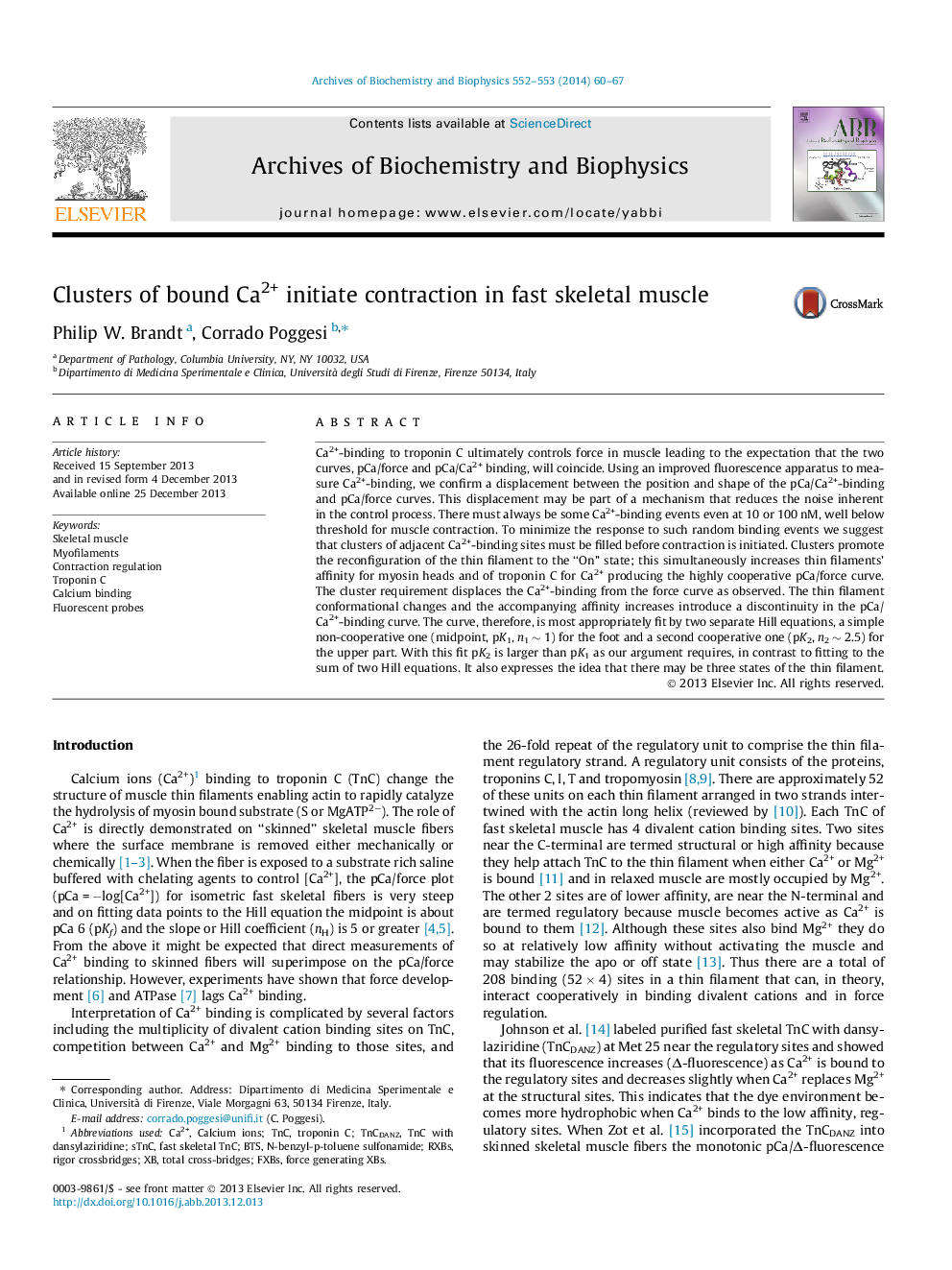| کد مقاله | کد نشریه | سال انتشار | مقاله انگلیسی | نسخه تمام متن |
|---|---|---|---|---|
| 1925183 | 1536348 | 2014 | 8 صفحه PDF | دانلود رایگان |

• Considerable calcium must bind to regulatory sites in skeletal muscle before force is initiated.
• Clusters of 5 or more adjacent binding sites must be occupied by calcium to switch the regulatory system “on”.
• This cluster mechanism prevents random calcium binding events from initiating contraction and subsequent energy loss.
• Force generating cross-bridges have no detectable effect on switching the muscle regulatory system to “on”.
Ca2+-binding to troponin C ultimately controls force in muscle leading to the expectation that the two curves, pCa/force and pCa/Ca2+ binding, will coincide. Using an improved fluorescence apparatus to measure Ca2+-binding, we confirm a displacement between the position and shape of the pCa/Ca2+-binding and pCa/force curves. This displacement may be part of a mechanism that reduces the noise inherent in the control process. There must always be some Ca2+-binding events even at 10 or 100 nM, well below threshold for muscle contraction. To minimize the response to such random binding events we suggest that clusters of adjacent Ca2+-binding sites must be filled before contraction is initiated. Clusters promote the reconfiguration of the thin filament to the “On” state; this simultaneously increases thin filaments’ affinity for myosin heads and of troponin C for Ca2+ producing the highly cooperative pCa/force curve. The cluster requirement displaces the Ca2+-binding from the force curve as observed. The thin filament conformational changes and the accompanying affinity increases introduce a discontinuity in the pCa/Ca2+-binding curve. The curve, therefore, is most appropriately fit by two separate Hill equations, a simple non-cooperative one (midpoint, pK1, n1 ∼ 1) for the foot and a second cooperative one (pK2, n2 ∼ 2.5) for the upper part. With this fit pK2 is larger than pK1 as our argument requires, in contrast to fitting to the sum of two Hill equations. It also expresses the idea that there may be three states of the thin filament.
Journal: Archives of Biochemistry and Biophysics - Volumes 552–553, 15 June–1 July 2014, Pages 60–67